How Many Species of Kangaroos Are There?
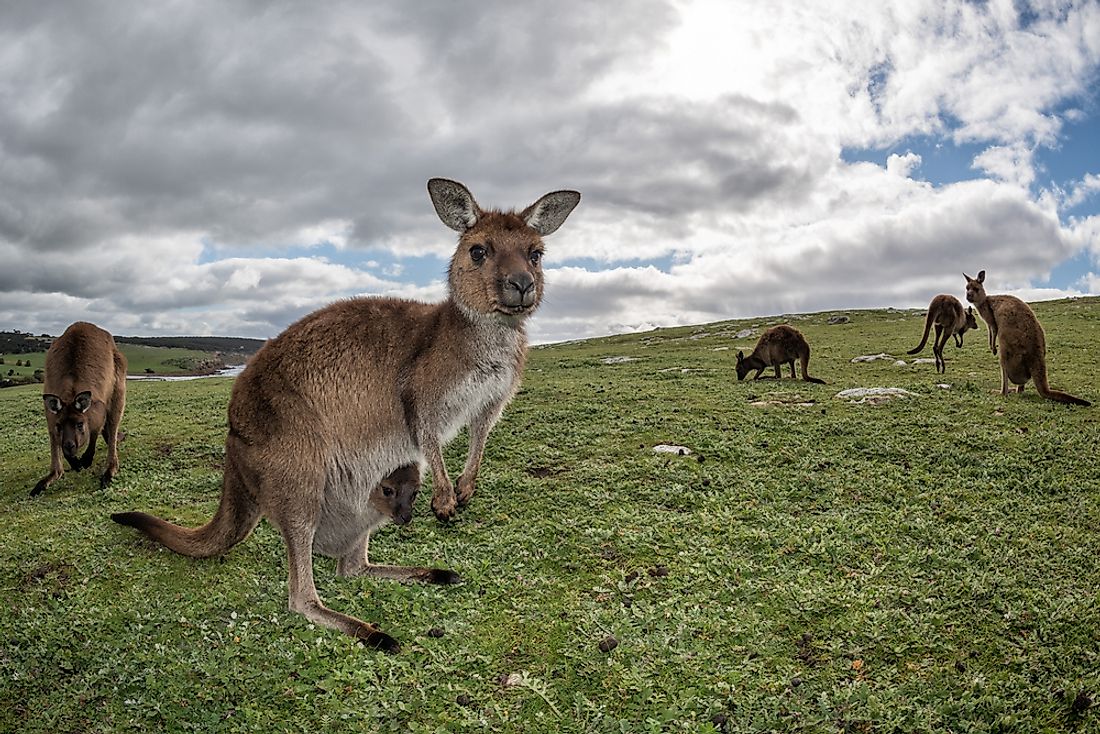
The kangaroo is a marsupial mammal that lives in Australia. Its strong hind legs distinguish the kangaroo for jumping, and it has large feet, a strong tail used for balance when jumping and long pointed ears. This animal is part of the Macropodidae family that includes koalas and possums. Female kangaroos have pouches that contain mammary glands to nurse their young until they are ready to emerge. Kangaroos are categorized as Least Concern in conservation status by the International Union for Conservation of Nature. There are four species of kangaroos.
4. Red Kangaroo (Macropus rufus)
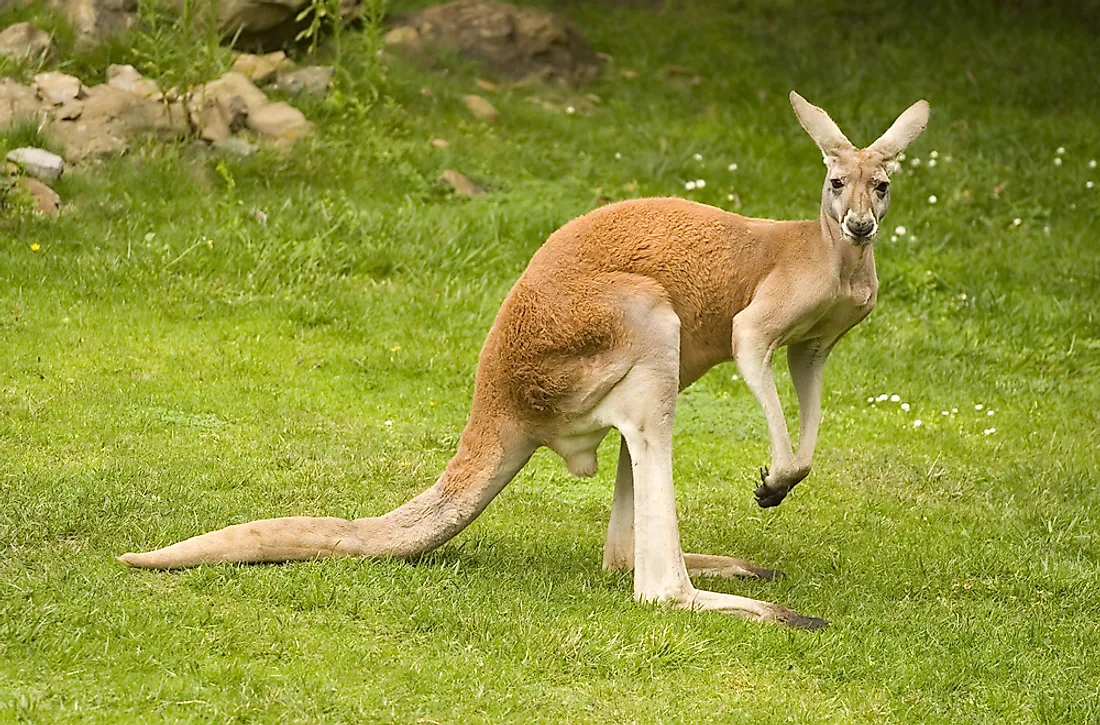
The red kangaroo is known to be the largest extant marsupial in the world. Red kangaroos are found across mainland Australia mostly occupying the arid and semi-arid center of the country and are sexually dimorphic. The males are red-brown and pale yellow-brown below whereas the females are blue-grey and pale grey below. The females are smaller than the male with a weight between 40-88 pounds and a length of 4.9-6.2 feet from the head to the tail. The males have a length of 5.5-6.4 feet, weighing 121-198 pounds. The position of the red kangaroo’s eyes gives the animal 300 degree vision. The red kangaroo lives in the grassland, scrubland, and desert habitats of western and central Australia. Studies show that 75-95% of the red kangaroo’s diet consists of green grass. These animals are able to conserve enough water to survive arid environments. The red kangaroo is a nocturnal and crepuscular animal and rests during the day in shade, although sometimes they may move about. Kangaroos are known to travel 16-19 miles in search of good feeding grounds when the forage is poor. Grazing takes up most of the kangaroo’s daily activities.
3. Eastern Grey Kangaroo (Macropus giganteus)
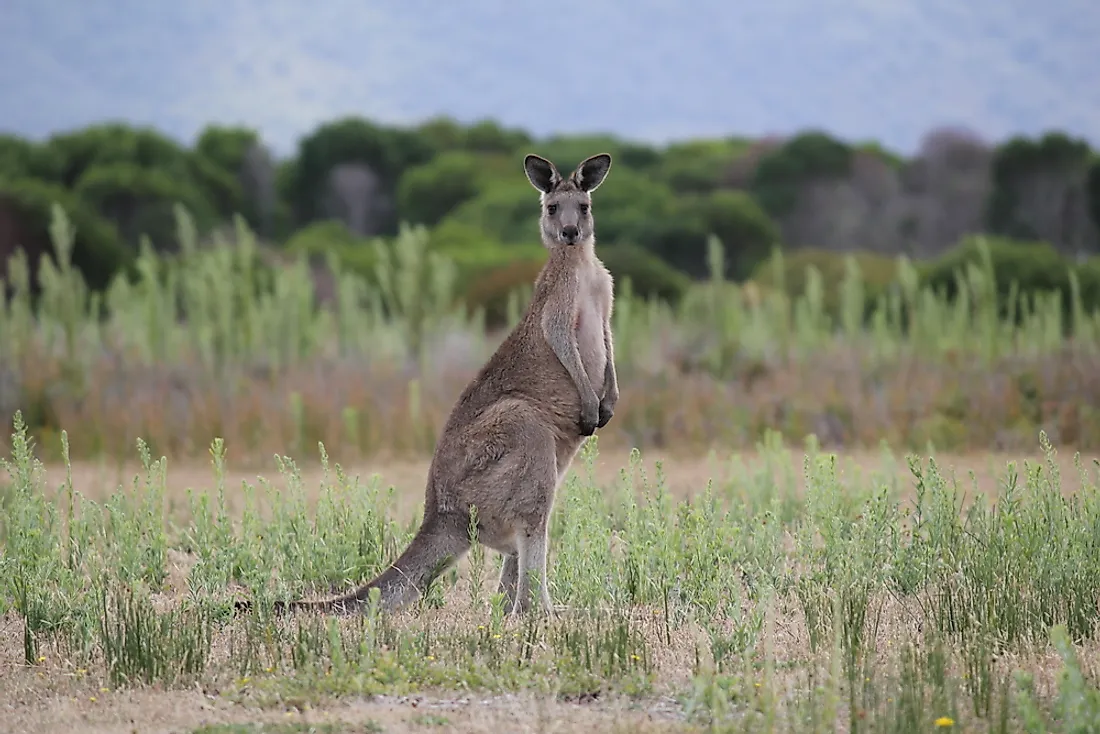
The eastern grey kangaroo is also referred to as the great grey kangaroo or the Forester kangaroo. This kangaroo is second to the red kangaroo as the largest and heaviest living marsupial. The adult male eastern grey kangaroo weighs about 110-146 pounds and have a length of 7.5 feet from the head to the tail, while the females weigh about 37-88 pounds with a length of 6 feet. This kangaroo is known to jump 30 feet at a time in distance. Large males of the species are more muscular and heavily built than the red kangaroo. The eastern grey kangaroo can move at speeds of about 30 miles per hour. The highest recorded speed of any kangaroo was about 40 miles per hour and was set by a large female eastern grey kangaroo. The kangaroo in this species has a soft grey coat which is easy to recognize, and its eyes seem large and wide. The eastern gray kangaroos have a very small head and large erect ears. They carry a genetic marker for blindness in one eye or for both eyes, making them not good in sighting. The kangaroos in this species are found in the wetter parts of Australia and prefer open busy grassland for shade during the day. The eastern gray kangaroo is prey for wild dogs called dingoes, which are very powerful dogs. In some instances, the kangaroos defend themselves by kicking the dogs and the kicks are capable of slicing with their sharp toenails.
2. Western Grey Kangaroo (Macropus fuliginosus)
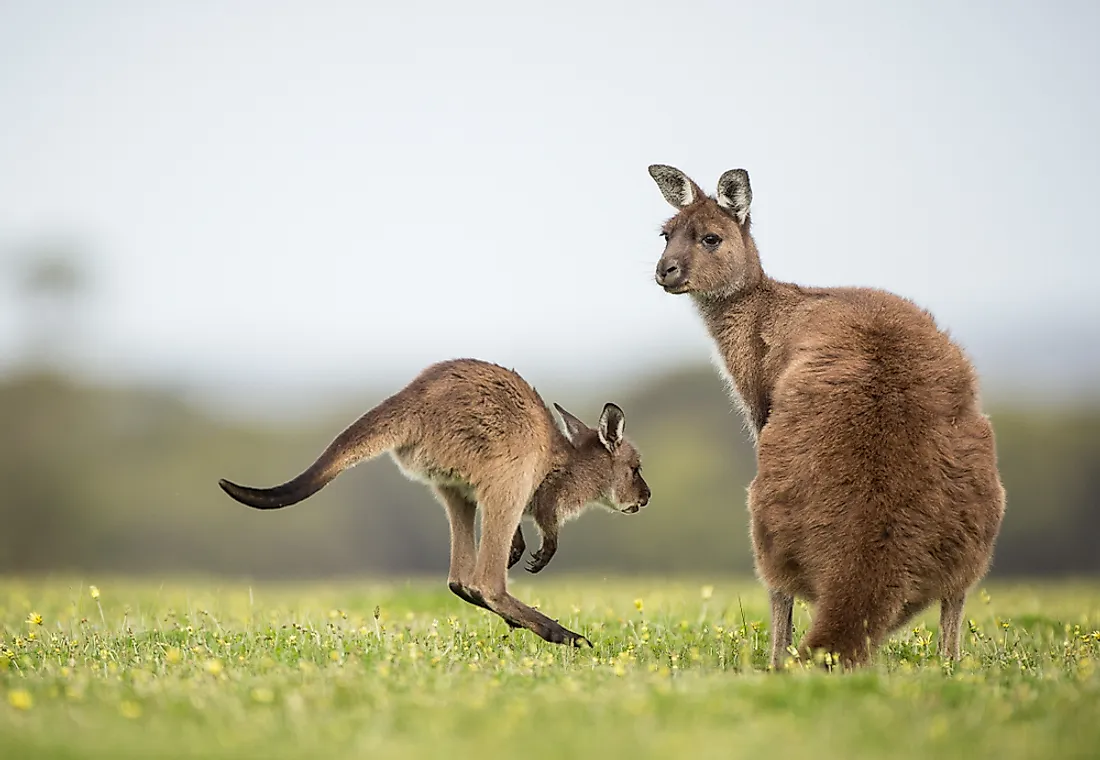
The western gray kangaroo is large and common in the entire southern part of Australia. This kangaroo is also known as black-faced kangaroo, malle kangaroo, or sooty kangaroo. This kangaroo species has two subspecies; Macropus fuliginosus melanops and the Macropus fuliginosus fuliginosus, commonly referred to as the Kangaroo Island Kangaroo. The western gray kangaroo has an average weight of 62 120 pounds and a length ranging between two feet nine inches and three feet seven inches. Its tail is between two feet seven inches and three feet three inches in length. The kangaroo is approximately four feet three inches tall. This species of kangaroo displays sexual dimorphism with the male being up to twice the female’s size. The western gray kangaroo has a thick, coarse fur ranging from grey to brown. The chest, throat and belly have a paler color compared to the rest of the body. It is hard to distinguish between this kangaroo species and the eastern gray kangaroo although the western gray kangaroo has dark coloration around the head. This kangaroo feeds on grass, leafy shrubs, and low trees, mainly at night. Mature males have a distinctive curry-like odor which has earned them the nickname “stinker”.
1. Antilopine Kangaroo (Macropus antilopinus)
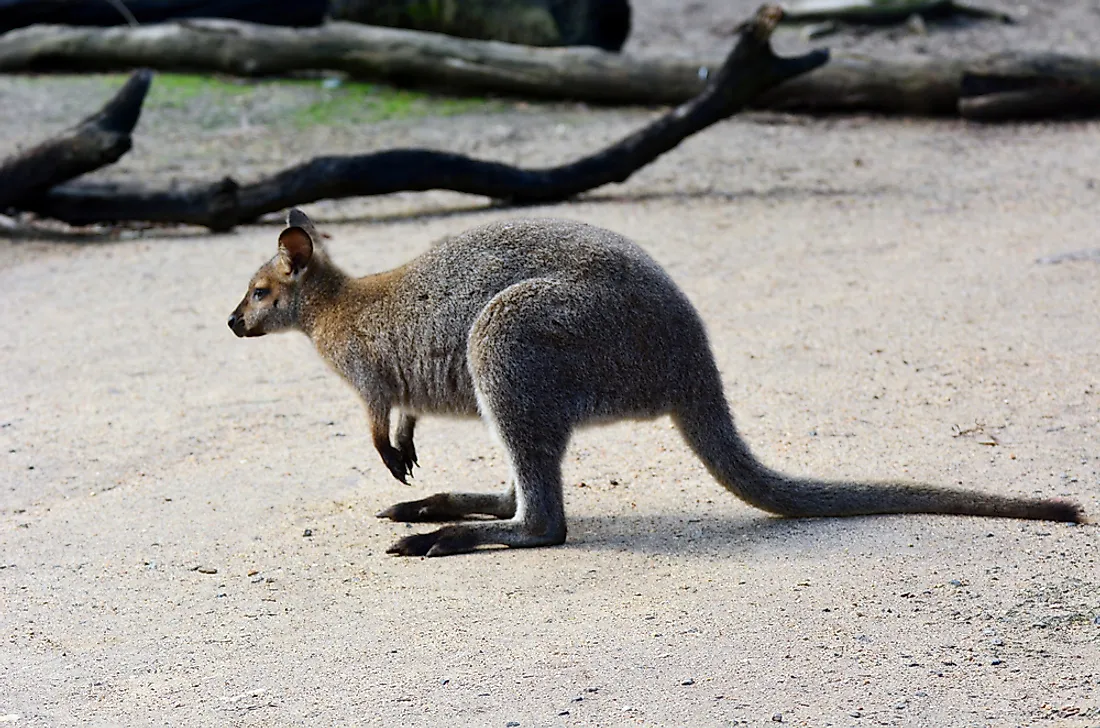
This kangaroo species is sometimes referred to as the antilopine wallaroo or the antilopine wallaby. It is mainly found in northern Australia. The name “antilopine” comes from this kangaroo’s fur, which is similar to that of antelopes in color and texture. This kangaroo is closely related to the red kangaroo and also displays sexual dimorphism. The male antilopine kangaroo weighs 154 pounds and is 5.9 feet long, while the female weighs less than 66 pounds. The males have a reddish tan coat with the front pale while the females range from grey to a light tan. They have slender faces and doe-like eyes, with a lifespan of 16 years. This kangaroo species mainly feeds on grass and always seek short grass areas. The noses of male antilopine kangaroo swell behind the nostrils, helping them release more heat in hot and humid climates.











